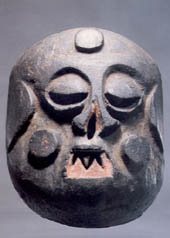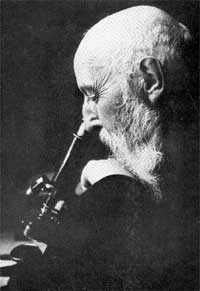HHTM Staff
Today begins a discussion of Hansen’s disease (aka leprosy) as a continuation of HHTM’s series on insidious, successful diseases of long-standing. Malaria was covered in multiple posts earlier. The purpose of this series is to uncover possible links to hearing loss, on the understanding that increasing global travel and inadequate information, training and equipment to recognize and handle tropical diseases raises the likelihood of undiagnosed and untreated disease “back home.”
Audiologists need to be aware of these diseases, their mechanisms (if known), and their possible effects on hearing.
Leprosy: The Most Successful Disease of All?
The very fact that leprosy is still with us makes it a successful infectious disease. It may be the most ancient human-host disease, thought to have “jumped to humans” 10 million years ago . Given its lengthy history, it’s not surprising that researchers believe it came out of Africa as humans migrated to other parts of the world. What appears to be leprosy has been alluded to for thousands of years in ancient cultures, as far back as 4000 BC in ancient Egypt and documented in a 1500 BC papyrus scroll.
But, leprosy is not ancient history in much of the world. It’s alive and doing quite well. Although few cases occur in the US (100-200 cases/year), hundreds of thousands of new cases are found annually in other countries (Mexico, Canada, Brazil, Singapor, Myanmar).
Leprosy is Slow, Sneaky, and Secretive
Leprosy is a bacillus bacteria (Mycobacterium leprae, shown in image above) that got smart millions of years ago by becoming a parasite and selecting humans as its only host.[1] The bacillus wasn’t even discovered until 1874, when a Norwegian doctor named Gerhard Armauer Hansen concluded that leprosy was not hereditary, but was itself a “specific disease with a specific cause.” Hansen used microscopy to identify M. leprae in tissue samples but the bacteria nature of what he saw under the microscope was not determined until 1880. Leprosy became “Hansen’s disease” as the result of his research efforts.
Even today, knowledge is sketchy about M. leprae and its parasitic lifestyle, not unlike the mystery that continues to surround other parasitic diseases y (e.g., malaria, Lyme’s disease). Worse than most, though, M. leprae “refuses to grow in cell culture or nearly any nonhuman animal.” This makes it extremely challenging to observe, measure, or manipulate.
Besides its ability to hide from science for so long, it’s also very difficult to diagnosis because it is a really good parasite, adapting and evading to stay alive in its host, and making sure it does not kill its host in the process. Once it’s in the host, the bacillus incubates for 3-5 years, mutating to “hide” from the body’s immune system, eventually producing a host of secondary infections that mask its true nature from the clinician and host human. Han & Silva (2014) conclude that leprosy the disease is a “natural consequence of a long parasitism.”
What Does Hansen’s Disease Have to Do With Hearing and Audiology?
It’s hard to tell – for the same reason that we don’t know much about effects of other sneaky, chronic parasitic diseases on hearing loss. They do so many terrible things to people, including killing them, that hearing loss is not at the top of the list when it comes to assessing individual patients at different stages of disease. Added to that, leprosy frightened people so much in the Age of Enlightenment that most people identified with the disease were quarantined, sometimes for life, in colonies where basic needs were barely met. Science and medicine did not thrive in those colonies, and certainly not Audiology.
Nevertheless, there are anecdotal medical reports that suggest hearing loss is one of many natural consequences of this long parasitic disease. Amundson and Ruddle-Miyamoto (2010) observe that “Hearing loss and a hoarse voice [were] frequent” in the 19th century Moloka’i colony in Hawaii. More recently, scientific journals contain scattered studies in which sensorineural hearing loss, conductive hearing loss, and vestibular disorders are noted in cases of leprosy.
Future posts will describe the symptoms of Hansen’s disease, its mechanisms (if known), and the studies that link hearing and balance disorders to leprosy.
Footnotes
[1] Armadillos in the western hemisphere are the sole exception to human hosts. They seem to have acquired the infection from New World explorers and can transmit it back to humans although the way this happens is not clear.The Feature Photo from Dermpedia.org and other photos courtesy of Stanford and Wikipedia








